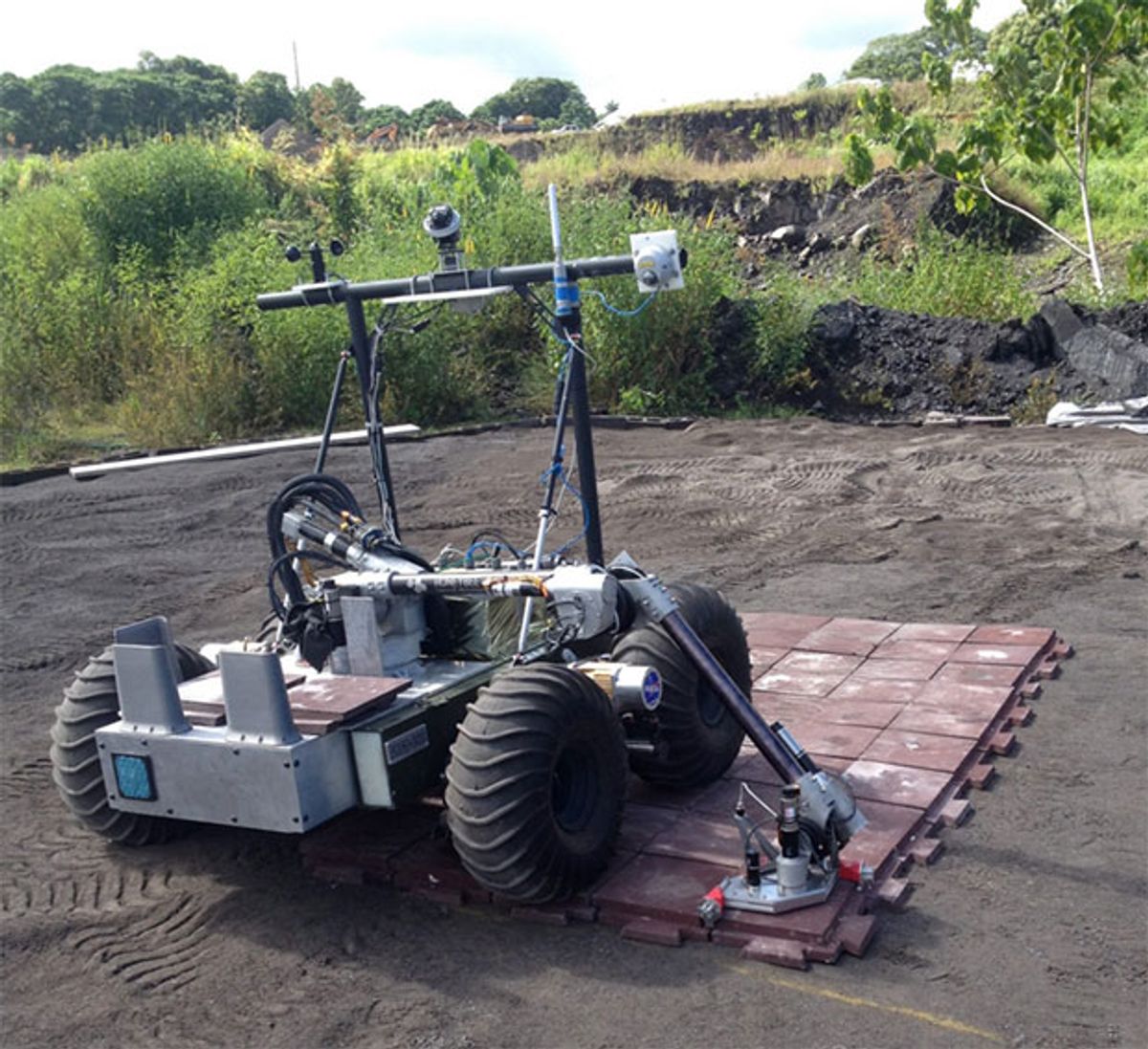In retrospect, it seems crazy that we sent people to the moon with nothing there waiting for them. If something had gone wrong, there was no Plan B. We’re probably not going to take a risk like that again, which is why we’re working so hard on robots that can go to the moon or Mars to get things all set up and running and warm and cozy for us in advance.
Setting up bases and habitats and doing exploring and whatnot may be the exciting extraterrestrial work, but there’s other Very Important things that need to be done. One of the most important things is a high quality landing pad, and the Pacific International Space Center for Exploration (PISCES) has gotten a teleoperated robot to build one. On Earth. Gotta start somewhere, right?
The reason that you need a landing pad is that dust on the moon (and on Mars) is nasty, nasty stuff. Lack of erosive processes, especially on the moon, means that the dust is all sharp and jaggedy. It electrostatically sticks to everything, and is abrasive enough that it will gradually (or not so gradually) wear most materials, including things like seals that are designed to keep air where you want it. The dust even ate through the specially constructed sample containers that the astronauts used to try to bring it back from the moon. And let’s not even get started on how you absolutely do not want to be breathing this dust into your lungs.
Anyway, you get the idea: kicking up lots of dust on either the moon or Mars means bad times, and not kicking up lots of dust while still allowing rockets to do their things means landing pads. Nice, flat, well-constructed landing pads. PISCES is part of a joint project (along with NASA) called ACME, or Additive Construction with Mobile Emplacement. It’s all about building structures with resources that can be found on-site, so that you’re not wasting time and energy shifting massive amounts of materials from one place to another. This landing pad, for example, was constructed out of interlocking paving stones made out of basalt (a very common volcanic rock) turned into concrete. The plan would be to send some robots in advance to harvest a bunch of basalt, crush it up, mix in some additives, and then use a solar furnace to pump out paving stones that your robot then makes a landing pad out of.
As a proof of concept, PISCES’ Helelani rover, equipped with an arm from Honeybee Robotics, was teleoperated through the construction of a 100-square-foot landing pad on a simulated lunar surface. There’s video of this process, but the video is… uh, look, I’ll just come right out and say it, the video is terrible. It’s over 10 minutes long. There’s no sound, except for sometimes. A bunch of it is still photos with bizarre transitions between them. There’s even some (ugh) vertical footage. Feel free to skip through it quickly.
On a side note, searching for “PISCES 2015” on YouTube mostly returns awful video horoscopes, and in other news, LOVE WILL COME TO STAY IN FEBRUARY!!!
It sounds like the original plan was to have the robot teleoperated from Kennedy Space Center in Florida, and some tests were run to show that it was possible to do this, although most of the control was performed from a tent next to the work site. Whether you’re next to the robot or not, as long as you’re only depending on data coming back from the robot itself, you can simulate long-distance teleoperation by introducing a time delay and simulating degradation, DRC-style.
Hopefully, we’ll see a more complete end-to-end process through PISCES and ACME soon, including a remote version of the basal concrete manufacturing process. When there’s a complete team of robots that can go all the way from in-situ raw materials to finished structures, that’s something we can get really, really excited about.
[ PISCES ] via [ PopSci ]
Evan Ackerman is a senior editor at IEEE Spectrum. Since 2007, he has written over 6,000 articles on robotics and technology. He has a degree in Martian geology and is excellent at playing bagpipes.



